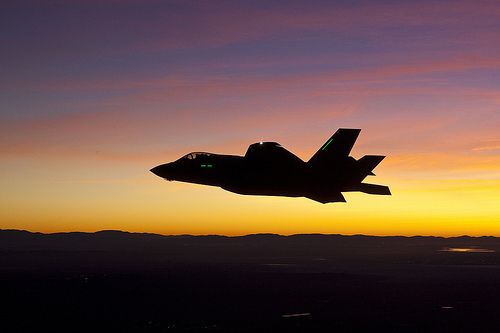The Air Force is the world’s most advanced air and space force and, with the integration of fifth generation aircraft, is gaining new tactical advantages that transcend beyond just stealth into areas such as enhanced maneuverability, multi-role capabilities and fused sensor and avionics systems that can communicate with other weapons systems.
That’s why it is imperative that U.S. forces continue to develop and begin to use fifth-generation fighters as they transition to the new Pacific-based strategy, according to Lt. Gen. Herbert J. “Hawk” Carlisle, Deputy Chief of Staff for Operations, Plans and Requirements, Headquarters U.S. Air Force.
During the Air Force Association monthly breakfast here Feb. 28, he said fifth-generation fighters, such as the F-35 Joint Strike Fighter and the F-22 Raptor, are critical to maintaining air superiority and global precision attack core competencies.
“The threat environment is continuing to grow, so as we look at how we’re going to maintain those competencies in the future, that’s where fifth generation fighters come in,” he said. “It’s not just about stealth.”
“The F-22 is better than any other aircraft in the world at air-to-ground except for the F-35, and the F-35 is better than any other aircraft in the world at air-to-air except for the F-22,” said Carlisle.
The general said the Air Force can continue to maintain the most elite fourth generation aircraft in the world, but that won’t prepare the U.S. to handle threats in the future.
“Our Air Force has got to keep evolving to meet these new challenges as we move forward into the future,” said Carlisle.
To illustrate this evolution and fifth generation fighter jet technology, the general shared a scenario in which an F-22 data-links coordinates to a Navy submarine-launched tomahawk missile onto a target.
“Now you have two stealth platforms, a submarine and an F-22, communicating with naval ordnance,” he said.
That level of interoperability is a large part of what makes the fifth generation aircraft so vital to the Air Force and U.S. military in general, he added. Aircraft must not only be stealth, but also be highly maneuverable, be able to conduct multiple roles, and these aircraft must also be able to handle sensor and avionics information in a network integrated way not only for the pilot, but for the entire joint force.
“We have to have a fused system capability and have them networked and integrated across the force,” he said. “To me, that’s as important on a fifth-generation fighter as anything.”










